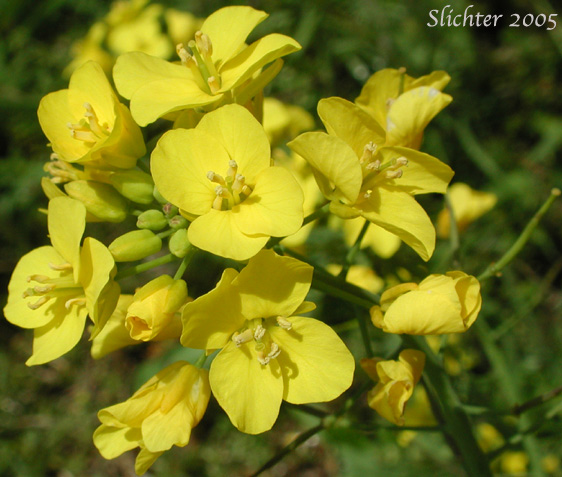
Field mustard is taprooted annual with single stem from 20-100 cm high. The stems range from simple to freely branched. The herbage of the leaves and stems is both glabrous and glaucous, although a fiew spreading hairs may be found on the stems. The several basal leaves have slender petioles with blades that are pinnatifid, the terminal segment oblong-ovate in shape and the largest and 2-4 smaller lateral lobes below the terminal segment. The stem leaves are at first similar to the basal leaves, but soon become clasping and sessile above, the basal lobes of the upper leaves extending past the stem they clasp. The upper leaves oare oblong, ovate-lanceolate or lanceolate in shape with entire to wavy margins.
The inflorescence is a raceme which begins tighly compacted and becomes loose and extended in fruit. The stout pedicels range from 7-25 mm long. Each of the 4 narrow sepals is 3-4 mm long. The 4 clawed petals are yellow and measure 6-10 mm long. Six stamens are present in each flower. The fruits are long, linear capsules or siliques which are ascending or somewhat spreading. These measure from 3-7 cm long and 2.5-3.5 mm wide. The distal end of the silique is beak-like and tapers gradually to a point. This beak is about 1/3-1/2 as long as the thicker portion of the capsule. The capsules contain many seeds, and plants tend to self-seed readily.
Field mustard may be found as a cultivated plant in farmland and as an escaped weed in fallow fields, waste places and along roadsides.
A European species, field mustard is found as an escaped weedy species throughout much of North America.
In the Columbia River Gorge it may be found between the elevations of 100'-2200' from the Sandy River east to just west of The Dalles, OR.